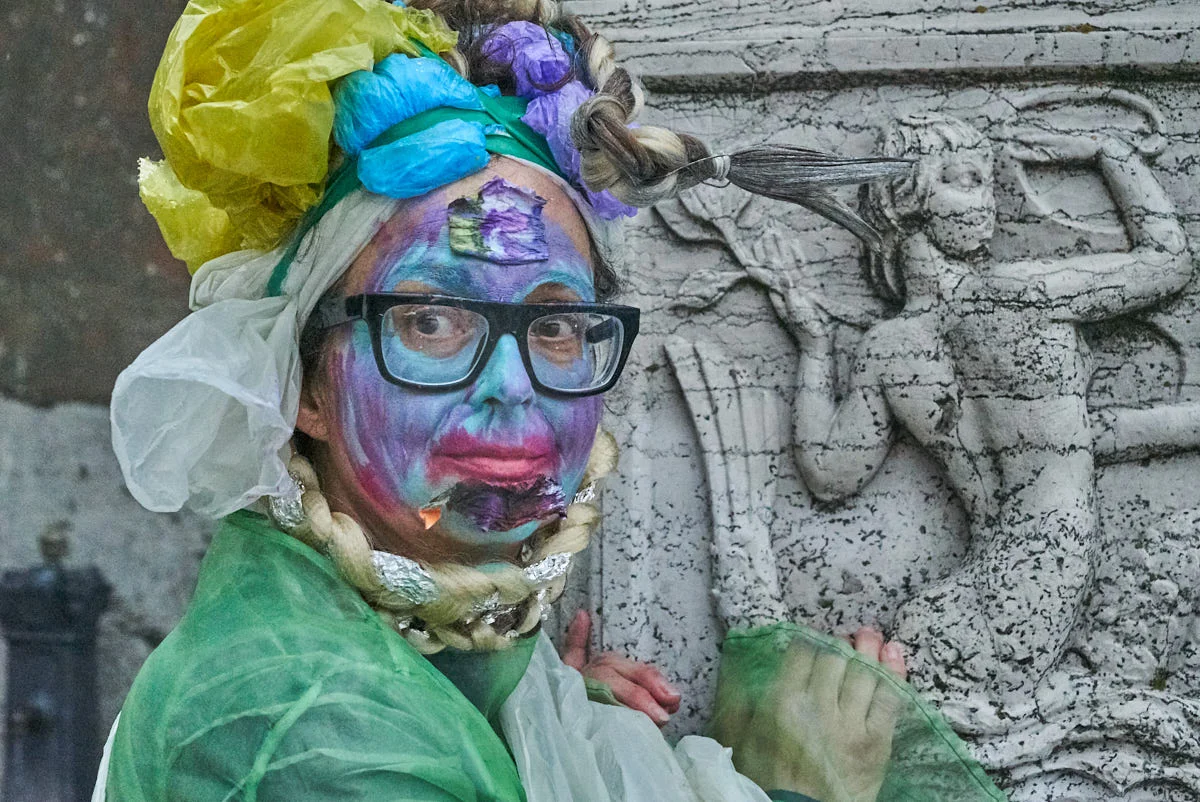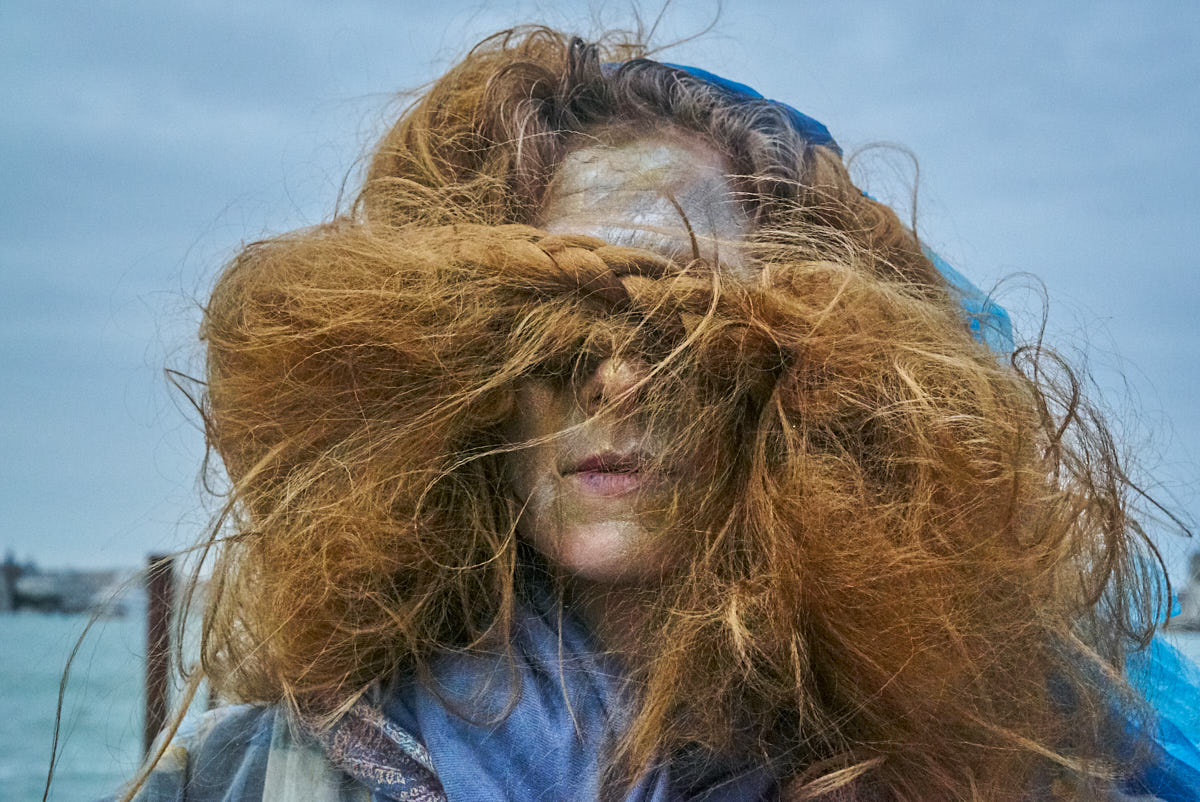inside GAIA
Photo - Performance by Iris Brosch Venice Art Biennale 2019
Internationally acclaimed photographer and video artist Iris Brosch weaves her feminist concept into deeply intriguing images to explore possible fields of action, play and utopia. Brosch finds inspiration in ancient myths, histories, literature and various text adaptations.
Iris Brosch is one of the first artists to produce performances at the Venice Biennale in 2005. Since then she has been depicting the relationship between feminism and ecology, the mystical connection between woman and nature, and has shared histories of oppression based on her concept of Eco-Feminism. With delicate body language, opulent staging and sensitive scanning of the female body’s surface, Brosch encourages female empowerment and self-acceptance by proposing the female body as a tool to overcome fear (Divinita – Birth of Black Venus – Centro Italiano per le Arti e la Cultura, 51st Venice Art Biennale, 2005.)
With Woman and Nature Near Extinction (2013), Metamophoses de L’amour (2017) or even earlier with In Paradisum (2003), the artist references elementary sources of human and non-human life where women emerge from the waters and canals of Venice. Within the framework of Tableaux Vivants Brosch employs a comprehensive metaphorical language which offers allegorical gestures borrowed from Greek myths and their transformed versions throughout the history of literature and the arts.
In her 2019 production, Brosch takes inspiration from the 58th Venice Art Biennale theme “May You Live In Interesting Times” and pays attention to environmental, political, and social instability. However, she radically goes further into experimental explorations to find Gaia, not as a deity from deep times, but rather as an entity that relates to our times of crisis where the earth and all human and non-human beings are at risk through an ongoing cataclysmic event of climate change and extinction.
Iris Brosch created an environment which offered three places to find a way “Inside Gaia”. One location was hosted by Fiora Gandolfi in her palazzo in the heart of Venice. Exploring the enclosed eclectic aura of the historic architecture made Gaia evolve. In the course of the performance Iris Brosch and her team relocated to the Canale Grande across the historic Palazzo of Ca’ Corner della Regina. The third location of the project was established on the island of Guidecca in cooperation with Manuel Carrion of Galleria il Redentore.
INSIDE GAIA
The artist’s concept of “Inside Gaia” is not defined as a mere search for the cliché idea of loss of nature. Moreover it gives access to a “critical zone” as it is described by Bruno Latour in the Gifford Lectures (2013) of our living sphere.
Similarly, Iris Brosch suggests a utopian and completely different perception of our planet that is animated, inhabited, and vitalized by other-wordly figures of women/men, and being relaunched by hybrid mythical goddesses or multi-species creatures that remind us of friendly Medusa versions caring and sharing in multiple gestures.
Just as Donna Haraway proposed “playing string figures” and the practice of “tentacular” figures, Iris Brosch’s protagonists closely communicate, inter-mingle and experiment, support and serve each other as one nourishing entity.
Text by Artemis HERBER
Creation
of the World
In the beginning there was only chaos. Then out of the void appeared Erebus, the unknowable place where death dwells, and Night. All else was empty, silent, endless, darkness. Then somehow Love was born bringing a start of order. From Love came Light and Day. Once there was Light and Day, Gaea, the earth appeared
GAIA , born out of chaos, creates sky and ocean
fragments of tableaux vivant dedicated to GAIA at the Venice Biennale and the Center for Hellenic Studies in Washington
Gaia
In Greek mythology, Gaia (/ˈɡeɪ.ə/ or /ˈɡaɪ.ə/; from Ancient Greek Γαῖα, a poetical form of Γῆ Gē, "land" or "earth"), also spelled Gaea (/ˈdʒiːə/), is the personification of the Earth and one of the Greek primordial deities.
Gaia is the ancestral mother of all life: the primal Mother Earth goddess. She is the immediate parent of Uranus (the sky), from whose sexual union she bore the Titans (themselves parents of many of the Olympian gods) and the Giants, and of Pontus (the sea), from whose union she bore the primordial sea gods. Her equivalent in the Roman pantheon was Terra.










































